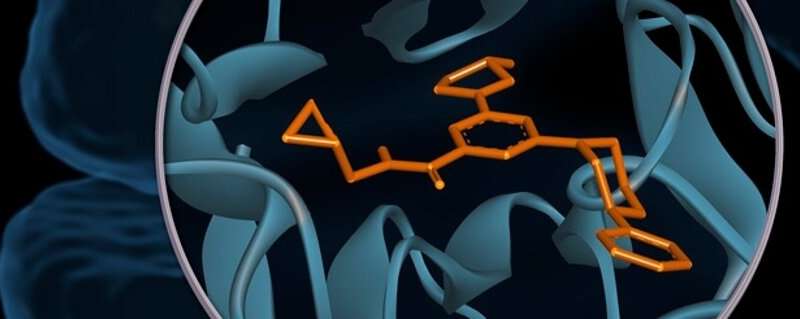Body’s own marijuana helps us forget traumatic memories

The endogenous compound anandamide—often referred to as the body’s own marijuana—plays a role in erasing memories of a traumatic event. This was discovered by an international team led by Leiden chemist Mario van der Stelt. The results have been published in Nature Chemical Biology and may provide a starting point for the treatment of anxiety disorders such as PTSD.
Marijuana in your brain
When you smoke a joint, the active ingredient THC makes you feel relaxed. But there are also side effects, such as an increased appetite and loss of memory. “What about our body’s own marijuana? Does that have a similar effect?” says Professor of Molecular Physiology Mario van der Stelt. He began wondering five years ago, and decided to start a research line to find out. Two years later, in 2020, he and his team are the first in the world to inhibit the production of anandamide in the brain, thus revealing its true nature: it helps us forget traumatic memories and reduces stress.
Robotic arms to the rescue
The research started in 2015 when Elliot Mock, first author of the publication and a Ph.D. candidate at the time, and master’s student Anouk van der Gracht managed to isolate the protein NAPE-PLD. This protein is responsible for the production of anandamide in the brain. The next step was to find a compound that stops this protein from working—the idea was that inhibiting the production of anandamide would allow them to study its biological role.
Finding such a substance turned out to be no mean feat. Van der Stelt turned to the European Lead Factory in Oss, the Netherlands, which was co-founded by his research group in 2013 and specializes in the rapid screening of hundreds of thousands of substances. He first had to secure EU approval before a fully automated system could start searching for the compound that inhibits the protein. “Actually, this involved 350,000 mini reactions, each with a different substance,” says Van der Stelt. “They did so with the help of robot arms from the automotive industry. It took just three days to screen 350,000 substances, very impressive.”
Two years of lab work
At the end of the screening, a hit emerged: a promising molecule to block the production of anandamide. “But this molecule wasn’t ready yet,” says Van der Stelt. “So Elliot set to work on it.” Mock optimized the molecule, and together with a number of students, spent two years synthesizing over 100 analogues– molecules that differ slightly from each other. One of these eventually revealed the function of anandamide in the body.
“We then started working with Roche Pharmaceuticals to analyze whether our optimized molecule reached the brain, an essential condition.” By that time, cellular models had already pinpointed the analogue that worked best, and the researchers named it LEI-401. Roche then confirmed that LEI-401 does reach the brain. “Next, we and researchers from the National Institutes of Health (NIH) in the U.S. investigated whether our substance really works in the brain. That also turned out to be the case,” says Van der Stelt.
Behavioural test
After three years, the way was finally open to answer the burning question: What is the physiological role of anandamide? This time, Van der Stelt called on partners in Canada and the U.S. to investigate the physiological effects of reduced anandamide levels in the brain. “In animal models, LEI-401 meant that traumatic memories were no longer erased. In addition, the corticosteroid level was elevated and a brain region was activated that is responsible for the coordination of the stress response. From this, you can infer that anandamide is involved in reducing anxiety and stress.”
A new path
Van der Stelt’s research opens the way for new methods to treat anxiety disorders such as PTSD. “It is a starting point for the development of new medicines. As we have now shown that anandamide is responsible for forgetting anxieties, pharmaceutical companies can focus on a new target. And you then have two options: looking for molecules that stimulate the production of anandamide or looking for molecules that reduce its degradation.”
Endocannabinoids
Source: Read Full Article
